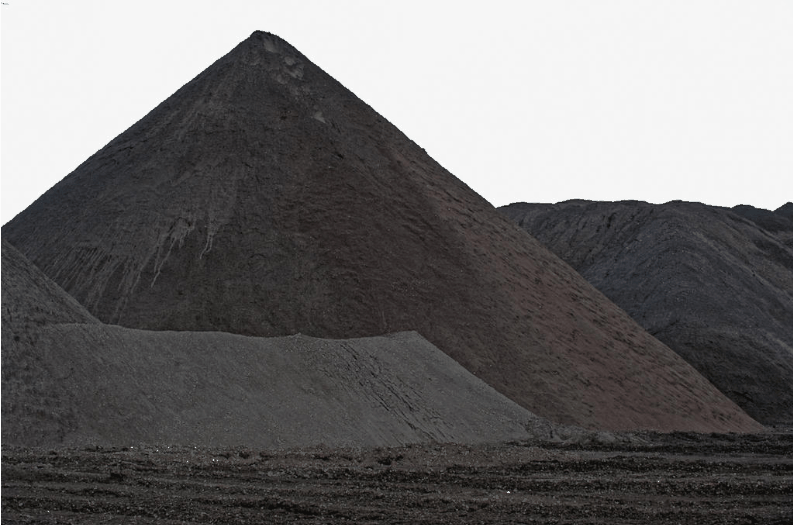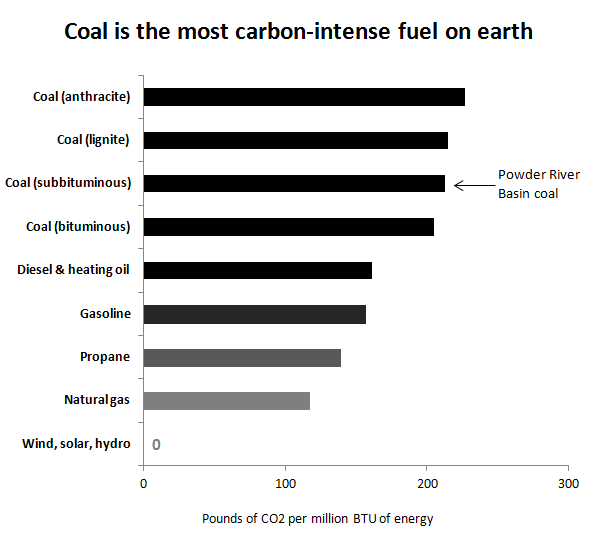One of the stranger things I’ve heard mentioned recently is that exporting coal would somehow reduce carbon emissions. This is nuts.
All coal is extremely carbon intensive—Powder River Basin coal included—and there is very little difference between coals. The low-carbon-coal argument is just a version of low-tar-cigarettes-are-healthy propaganda, only with less factual support.
So in the spirit of myth-busting, here are the facts about the carbon-intensity of major energy sources.
As is obvious from the chart, even the lowest carbon coal has an extremely high carbon footprint. For example, the subbituminous coal characteristic of the Powder River Basin—proposed for export via the Northwest—is 32 percent dirtier than diesel and 82 percent dirtier than natural gas.
True, on an energy-output basis subbituminous coal is maybe 1 percent cleaner than lignite and 6 percent cleaner than anthracite. But that’s hardly something to crow about because it is also 4 percent dirtier than bituminous coal, the type of coal it is most likely to substitute for. (Anthracite is the highest grade of coal and relatively expensive, while lignite is very low-grade and impure coal; bituminous and subbituminous are the major coals used for producing electricity.) If anything, Powder River Basin coal exported to Asia is likely to be even more carbon-intense than existing supplies.
The reason there’s not much variation in the carbon intensity of coals is because, when it comes to coal, the energy produced is simply a very close reflection of the carbon content (with hydrogen playing a minor supporting role). In a sense, the carbon is the energy.
Are we clear now? There’s no such thing as low-carbon coal.
Notes. All data in the chart come directly from the US Energy Information Administration, here. These are averages that mask some variability within categories. They don’t include “upstream” emissions, such as those associated with transporting coal literally halfway around the world.


